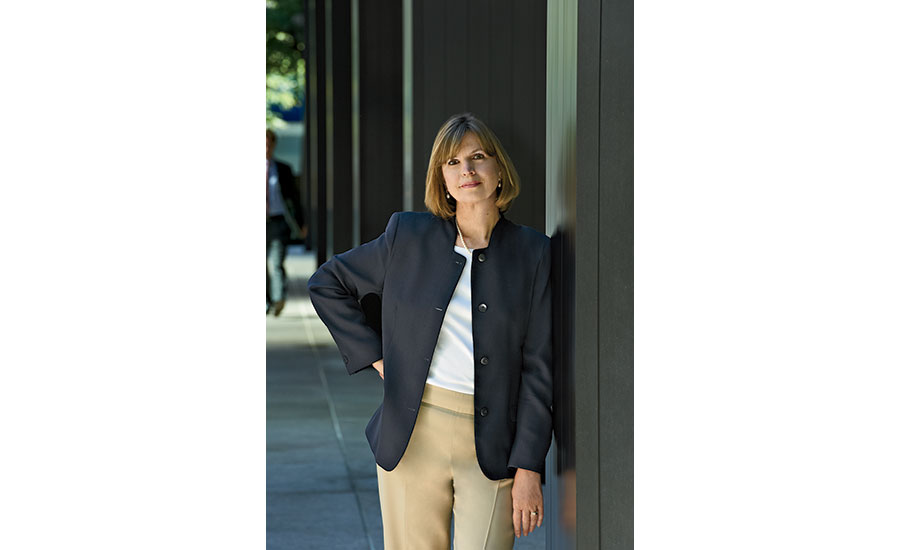To be in Venice for this year’s Architectural Biennale is to face an inevitable irony. The exhibition, with the theme Reporting from the Front, invited architects to focus on the world’s most urgent problems—poverty, mass migration, environmental degradation, housing, social inequities of every sort. As you dive into sobering territory—and into a remarkable range of architectural responses to that critical thesis—there is no getting around the fact that, yes, you are in Venice, a sumptuous place where the gilded facades of Renaissance palazzos glitter along the Grand Canal, the gardens are fragrant with star jasmine, and where, as day turns to night and you leave the Biennale’s exhibits behind, you are going to have a wonderful evening somewhere in that magical city.
But if you can navigate the distance between the setting and the subject—between privilege and the realities that underpin the Biennale, as curated by the Chilean architect Alejandro Aravena—there are riches of another sort in many of the exhibits in Venice’s Giardini and the Arsenale.
Architecture as a discipline is rarely defined as broadly as it is in this Biennale. In Venice, today’s architect is shown to be a renaissance man or woman, adept at research, statistics, data, scientific experimentation, political advocacy, history, writing, reporting, multimedia communication, graphic arts, materials analysis, and construction. The curators of the U.S. pavilion, which is focused on regenerating Detroit, commissioned speculative projects for real sites, but, in general, there is relatively little “pure” architecture (whatever that means). While some visitors to the Venice preview grumbled about that, the diversity of perspectives on view was exhilarating.
Of course, the Biennale is far too vast to neatly unpack all the objects, images, and ideas afterwards. But here are a few takeaways.
-
Mud. There was a lot of mud. A special mud recipe was used to make bricks for a prototype of a vaulted droneport from the Norman Foster Foundation, to house drones that could transport crucial supplies to remote parts of the world. The award-winning German architect Anna Heringer built a surprisingly beautiful shelter of Venetian mud, polished to a soft golden hue, round and high, like a Doge’s hat. Her goal: to promote mud as a readily available though overlooked building material—which, she says, is unfairly banned for use in construction in many places.
-
Temporary settlements. The plight of refugees was a prevalent subtheme. Even the pavilion representing the refugees of Western Sahara was temporary—a tent pitched in the Giardini—and it promoted the striking architecture its displaced citizens have built in refugee camps where they’ve lived for decades, over the border in Algeria from their own beleaguered homeland. A different kind of temporary settlement, what architect Rahul Mehrotra calls “ephemeral urbanism,” was on view in an astonishing exhibit he curated documenting the Hindu pilgrimages in India that draw to one place tens of millions of people for whom “stability is a luxury.”
- Forensics. Exhibits showed how architectural analysis was used to verify the damage of drone strikes in Pakistan and bombs in Gaza. In one especially haunting installation, a historian, who was an expert witness in a lawsuit brought by a Holocaust denier, has recreated part of an Auschwitz gas chamber on the basis of his long, detailed study of fragmentary architectural evidence.
-
Repurpose. Thrift, making do, and sustainability were present everywhere at the Biennale, beginning with Aravena’s own introductory installation that recycled metal studs and gypsum board from the last Venice Art Biennale. Rural Studio, the Auburn University program in Hale County, Alabama, used stacks of lockers and plastic-wrapped bedsprings for their exhibit, which will be donated to social services for the homeless in Venice after the Biennale.
Yes, there are homeless people in Venice, far from the tourist throngs in St. Mark’s Square. And as a historic crossroads for refugees, Venice actually has a certain resonance with Reporting from the Front. I strayed from the Biennale to visit the Punta della Dogana, the 17th-century building adapted by Tadao Ando for the billionaire French art collector François Pinault. In that private museum was another irony: a conceptual piece by Pier Paolo Calzolari that featured six mattresses affixed to the wall. I couldn’t help but think of Rural Studio’s beds for the homeless, while looking with a little bemusement at beds in an installation by an artist whose work sells for six figures. But, of course, it’s not just in Venice that culture, commerce, and good intentions are bumping up against each other. It’s the world we live in.





Post a comment to this article
Report Abusive Comment